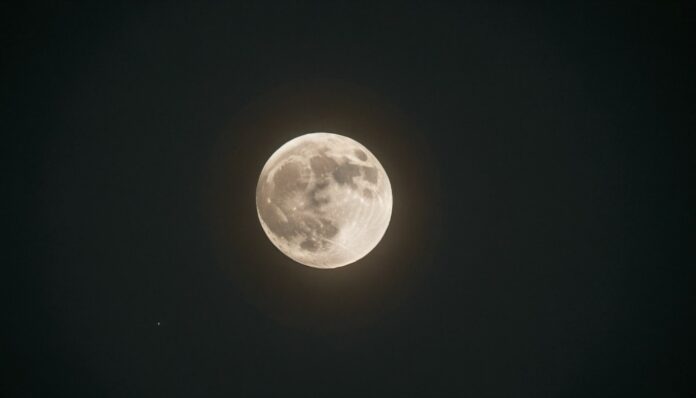The Moon is Earth’s only natural satellite and the fifth-largest moon in the solar system. It orbits Earth at an average distance of about 238,855 miles (384,400 kilometers) and is responsible for tides due to its gravitational pull.
This synchronous rotation has led to the familiar “man in the moon” appearance we see from our planet. The Moon has fascinated humans for centuries and has been the subject of myths, scientific study, and exploration, including the historic Apollo 11 mission in 1969 when humans first landed on its surface.
Interesting Facts About the Moon
- The Moon is about one-quarter the size of Earth.
- The Moon is drifting away from Earth at a rate of about 1.5 inches (3.8 cm) per year.
- The Moon’s gravity is about one-sixth that of Earth’s, meaning you would weigh less on the Moon.
- The far side of the Moon, often called the “dark side,” is actually just the side that faces away from Earth.
- The Moon has no atmosphere, leading to extreme temperature fluctuations between day and night.
- The surface temperature on the Moon can reach up to 253 degrees Fahrenheit (123 degrees Celsius) during the day and drop to minus 387 degrees Fahrenheit (minus 233 degrees Celsius) at night.
- The Moon has water ice, primarily found in permanently shadowed craters at the poles.
- The Moon’s phases are caused by its orbit around Earth, changing the angle at which we see the illuminated part.
- A lunar eclipse occurs when Earth comes between the Sun and the Moon, casting a shadow on the Moon.
- The Moon influences Earth’s tides, with the gravitational pull causing the rise and fall of ocean levels.
- The largest crater on the Moon is the South Pole-Aitken Basin, which is about 1,550 miles (2,500 km) in diameter.
- The Moon has “moonquakes,” which are less intense than Earth’s earthquakes and caused by tidal forces from Earth.
- The Apollo missions brought back 842 pounds (382 kg) of lunar rocks and soil.
- The Moon has been visited by unmanned spacecraft from multiple countries, including the United States, Russia, China, and India.
- The first human-made object to reach the Moon was the Soviet Union’s Luna 2 in 1959.
- The Moon’s light is actually reflected sunlight.
- The Moon was formed about 4.5 billion years ago, likely from debris after a Mars-sized body collided with Earth.
- The Moon’s surface is covered in fine, powdery dust called regolith.
- The Moon has no magnetic field, unlike Earth.
- The footprints left by astronauts on the Moon are likely to remain for millions of years due to the lack of atmosphere and weather.
- The Moon appears larger when it’s near the horizon due to an optical illusion known as the “Moon illusion.”
- The term “lunatic” comes from the Latin word “lunaticus,” meaning “of the moon,” reflecting the belief that the Moon influenced mental health.
- The first photograph of the far side of the Moon was taken by the Soviet spacecraft Luna 3 in 1959.
- The Moon’s surface has regions called maria, which are large, dark basaltic plains formed by ancient volcanic eruptions.
- The Lunar Reconnaissance Orbiter has been mapping the Moon’s surface in high detail since 2009.
- There are plans for future manned missions to the Moon, including NASA’s Artemis program aiming to land “the first woman and the next man” by 2024.
- The Moon’s weak gravity affects how materials settle, causing unique geological formations.
- The Moon has no liquid water, but its polar regions contain ice in shadowed craters.
